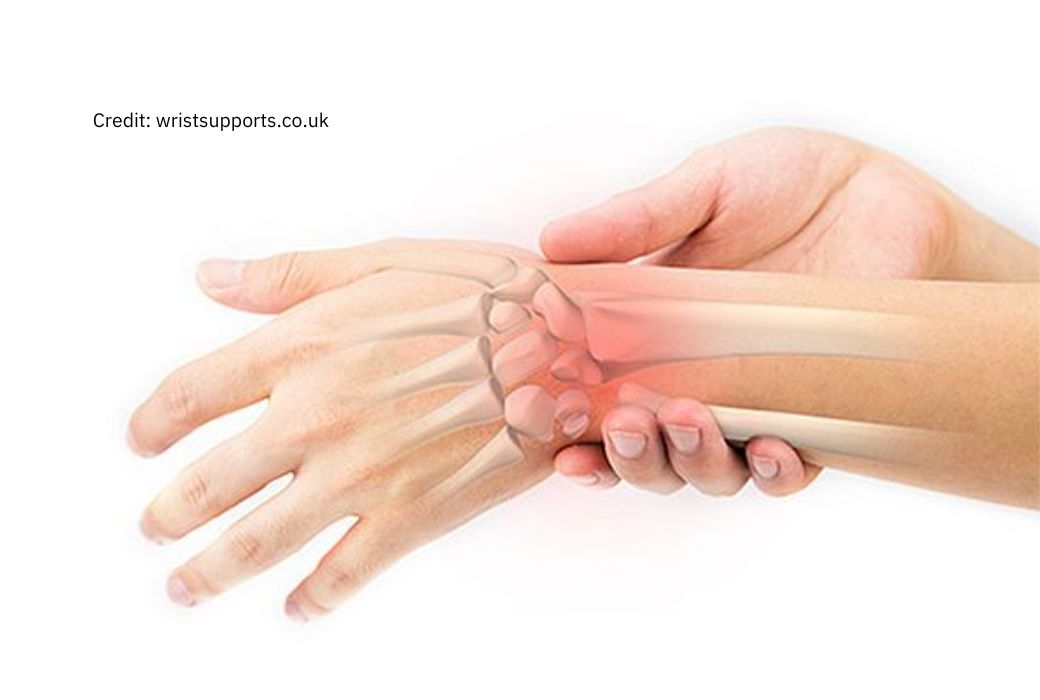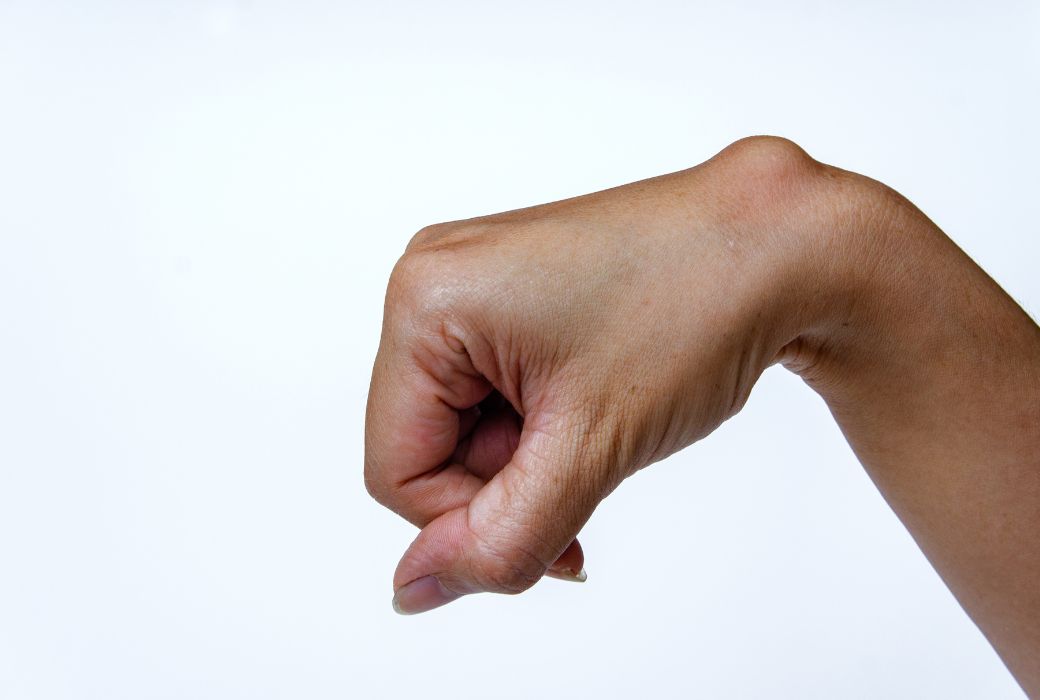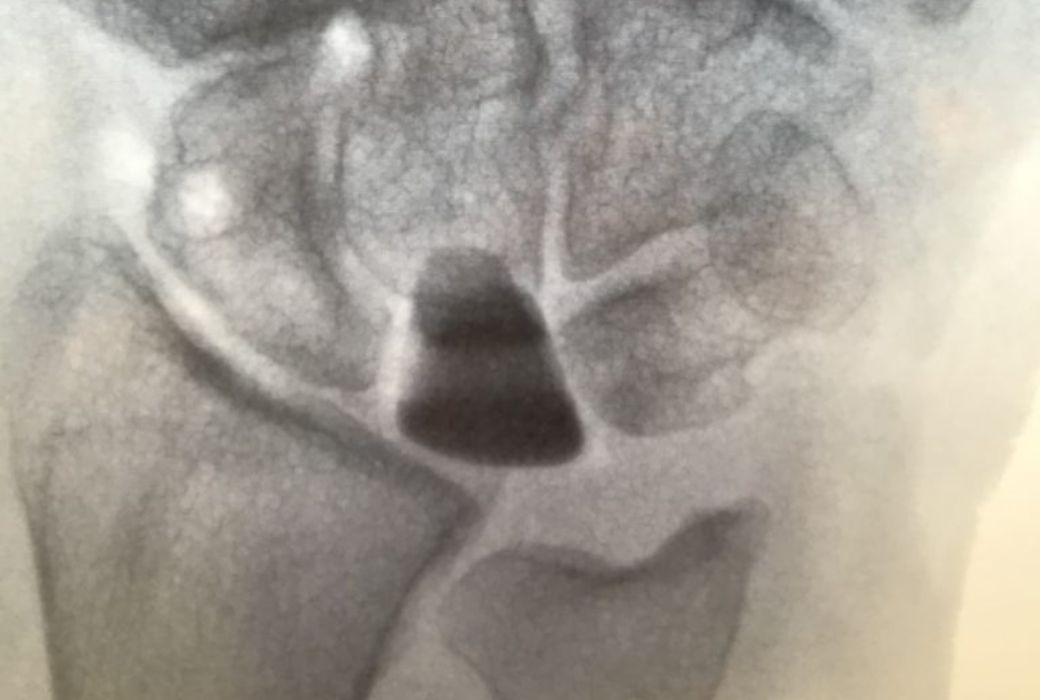Our wrists are incredibly versatile joints, allowing us to complete many daily activities with a wide range of movement. Formed from eight carpal bones: the scaphoid, lunate, triquetrum, trapezium, trapezoid, pisiform, capitate and hamate bones, attached to the long bones of the forearm (radius and ulna) and held together with ligaments and tendons, the wrist is complex. Due to its intricate formation, the wrist can be highly susceptible to injury. Without a working wrist, everyday life can become much more difficult.
This article will discover the various wrist injuries, what causes them, their symptoms, diagnosis methods, and treatment options.
What are some common wrist injuries?
Injuries can vary depending on the structures affected, and in the case of the wrist, this can be an injury to the carpal bones, the forearm bones, the tendons, ligaments or nerves.
By far the most commonly injured element of the wrist are the ligaments. Ligament injuries are known as sprains, where the ligament has stretched too far or more severely, torn. An example of a wrist sprain is a scapholunate ligament tear.
Scapholunate Ligament Tear
The scapholunate ligament provides structure and stability to the scaphoid and lunate carpal bones.
Causes of a Scapholunate Ligament Tear
Falling onto an outstretched hand or a forceful twisting motion of the hand.
Symptoms of a Scapholunate Ligament Tear
The symptoms can depend on various factors; whether you have sustained the injury recently (acute) or if the injury is more long-standing (chronic), and whether you have partially torn the ligament or completely ruptured it.
For acute injuries, you are likely to feel wrist pain, have some stiffness and swelling, and a loss of grip strength. More chronic injuries might include wrist weakness, clunking, pain after use and some background pain, often from secondary arthritis.
Diagnosing a Scapholunate Ligament Tear
Diagnosis can be based on the symptoms present, often through determining where exactly the pain and swelling is located.
X-rays and MRIs can be used to ensure the correct location, where an X-ray will show a widening of the scapholunate gap and/or a ‘ring sign’ on the scaphoid.
The Kirk-Watson test can also be used specifically for scapholunate ligament tears where a positive test is shown via the pain felt in the wrist.
Treatment for a Scapholunate Ligament Tear
The treatment options for a scapholunate ligament tear will differ depending on the grade of the tear. For a partial tear, it is recommended that the wrist is immobilised in plaster for 4-6 weeks, followed by hand therapy for up to 18 months post-injury. For injuries where the ligament has completely torn, surgery may be required where bone anchors are applied to repair the ligament. The wrist is immobilised in a plaster cast for 8 weeks, after which hand therapy is used to return the range of movement to the wrist joint.
Scaphoid Fracture
Another wrist injury that can be common is a fracture. A fracture to the scaphoid carpal bone can be painful and if not treated correctly can lead to the development of osteoarthritis.
Causes of a Scaphoid Fracture
Similar to a scapholunate ligament tear, scaphoid fractures can be caused by a fall onto an outstretched hand, where your palm is flat and your wrist bends backwards.
Symptoms of a Scaphoid Fracture
There are two main symptoms of a fractured scaphoid: pain around the wrist and swelling and/or bruising around the wrist.
Diagnosing a Scaphoid Fracture
The pain felt after a scaphoid fracture can often be mistaken for a scapholunate ligament sprain as the pain isn’t typically as bad as other wrist fractures. As with all fractures, an X-ray will determine a breakage, however, scaphoid fractures can be difficult to identify due to the other carpal bones hiding the scaphoid.
In some cases, an MRI or CT scan might be needed in place to accurately diagnose the injury.
Treatment for a Scaphoid Fracture
The treatment applied for a scaphoid fracture will depend on whether the scaphoid bone has become displaced in the wrist. If it has not been displaced, treatment will involve your arm in a cast for 8-12 weeks. If the bone has become displaced, surgery will be needed to screw/pin the fragmented bone together, with recovery in a plaster cast.
Wrist Ganglions
A ganglion cyst forms when synovial fluid leaks out of its sack, and can appear at any joint in the body. They come in all shapes and sizes and can be fairly common at the wrist.
Causes of Wrist Ganglions
Not a lot is known about why gangions form but it is predicted they can form as a result of trauma or underlying arthritis.
Symptoms of Wrist Ganglions
A wrist ganglion will take the form of a round lump under your skin. They can sometimes be painful depending on their size and positioning.
Treatment of Wrist Ganglions
In many scenarios, wrist ganglions can disappear on their own without treatment. If your ganglion is painful, however, you may want to consider these two treatment options: aspiration or surgery.
Aspiration involves the use of a needle to drain the fluid in the cyst. This procedure is simple but can often result in the ganglion returning in up to 50% of people.
Surgery may be the better option for bigger or more painful ganglion cysts and will involve an incision into the wrist for the cyst to be removed. After surgery, the incision will be stitched back together, bandaged and given time to heal.
Wrist Arthritis
Wrist arthritis affects the joint at the wrist and can be categorised into two types: rheumatoid arthritis and osteoarthritis.
Causes of Wrist Arthritis
As with wrist ganglions, there is not one definitive cause of arthritis. Osteoarthritis can occur due to normal wear and tear of the bones and is commonly seen in the older population, but arthritis can sometimes simply be passed on via family genes.
Symptoms of Wrist Arthritis
Arthritis, no matter where in the body, can be painful, cause stiffness at the joints, and cause swelling and tenderness. If you are worried about arthritis, read our article on the ‘11 telling signs of wrist arthritis’.
Treatment of Wrist Arthritis
Unfortunately, there is no cure for arthritis. There are, however, methods for relieving symptoms to make the condition more manageable. Physiotherapy, paired with regular analgesia, steroid injections and salvage procedures is often offered as a pain relief, however, this is in exchange for a loss in wrist movement.
Kienböck’s Disease
Finally, Kienböck’s disease is a condition in which the blood supply to the lunate carpal bone is cut off, resulting in the bone dying and breaking apart.
Causes of Kienböck’s Disease
There can be multiple factors involved in the development of Kienböck’s disease. Some people may have had an abnormal growth of their carpal bones, which causes pressure upon the lunate. People with pre-existing blood flow conditions such as Lupus or Sickle cell anaemia are more susceptible to Kienböck’s disease. Finally, trauma to the wrist, such as a fall, or repeated pressure on the lunate over time can cause the disease to develop.
Symptoms of Kienböck’s Disease
It is not uncommon for people with Kienböck’s disease to not know they have it. Kienböck’s disease is a subtle and slow-developing condition that is commonly only identified in its later stages.
Some signs you may have Kienböck’s disease involve a loss of motion and/or strength in your wrist. Gripping objects may feel more difficult and you may also hear a clicking sound in your wrist. Pain and swelling may also begin to occur as the condition progresses, which is a more obvious sign of Kienböck’s disease.
If you are experiencing any of these symptoms, particularly after direct trauma or impact to your wrist, seek medical advice. Ladan Hajipour is an expert hand and wrist surgeon based in Manchester who can offer professional advice and treatment. Book your appointment today.
Diagnosis for Kienböck’s Disease
As mentioned above, Kienböck’s disease can be difficult to diagnose and people often don’t know they have it. An X-ray may not show the disease in its early phase so an MRI will be needed for a definite diagnosis.
In the mid stages of the disease, diagnosis is easier as the hardened lunate bone will appear on an X-ray due to its change in density.
Finally, in the late stage of the disease, if it has not yet been identified, the broken-up bone can lead to severe arthritis development.
Treatment for Kienböck’s Disease
There are various treatment methods involved in Kienböck’s disease: Revascularisation, Proximal Row Carpectomy, Implant Arthroplasty, Fusion, and Joint Levelling.
- Revascularisation: The aim of this treatment method is to restore blood flow to the lunate bone. This involves surgery where a healthy portion of another bone will be removed and placed upon the lunate. An external fixator may be needed to support the lunate during the healing process. This process can only be used whilst the lunate is still intact.
- Proximal Row Corpectomy: This treatment method is more often used in the later stages of the disease, as the bone is broken apart. This procedure involves removing the bone fragments, alongside the two bones on either side of the lunate.
- Implant Arthroplasty: This procedure takes place after a proximal row corpectomy, and in place of the removed lunate goes a pyrolytic carbon material prosthetic.
- Fusion: This treatment is again used for later stages of Kienböck’s disease, and involves fusing either some or all of the carpal bones together. Unfortunately, this procedure can heavily reduce the mobility of the wrist but is done as a pain relief rather than a fix.
- Joint Levelling: Finally, we mentioned in the causes section that Kienböck’s disease can result from skeletal variations. Joint levelling involves either shortening or lengthening the forearm bones (radius and ulna) in an attempt to relieve pressure on the lunate.
Wrist injuries can be painful and debilitating, affecting our everyday lives. It is important to understand the causes and symptoms of wrist injuries, as if left untreated, can lead to lifelong consequences. If you or someone you know has recently had a fall or trauma to the wrist, and is experiencing symptoms, speak to a healthcare professional, as an early diagnosis and treatment is the key to a full recovery. Contact us to speak with a hand and wrist specialist and book your appointment today.







